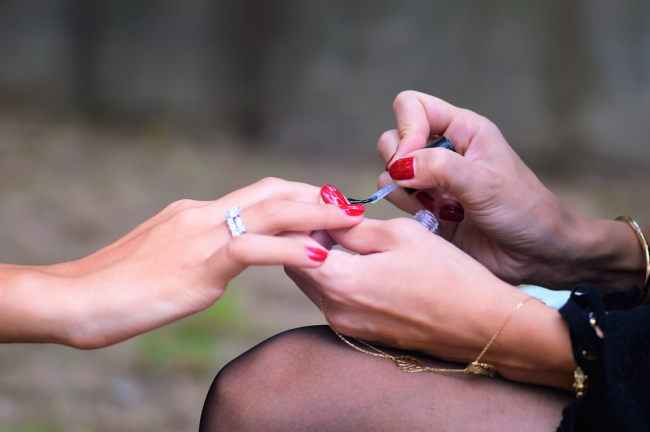
Nail painting is big business. Every week, a new salon seems to open on the main street, enticing people to come and get their nails painted.
Most establishments are okay and won’t put you at risk, but some are less scrupulous and may even be downright dangerous.
In this post, we look at some of the problems and dangers of cheap nail painting and how they could adversely affect your health and well-being. Here’s everything you need to know:
Nail Damage
One common problem with cheap nail painting services is the risk of nail damage. Using the wrong techniques can cause harm to the nails and even mean that they lift out of the nail bed.
Overfilling and over-buffing the nails are two major problems that can cause damage that lasts for ages and takes months to heal. For many customers, this can lead to pain, weakness, and nail-splitting further down the road.
Nail damage can also occur when technicians apply too much glue for extensions or the wrong type. Adding too much inevitably leads to damage and problems further down the line (especially if nails get caught in doors or extensions are forced back).
Allergic Reactions
In some cases, people also have allergic reactions to cheap nail painting services. Technicians often try to cut costs using inexpensive glues and materials that aren’t always made to the highest standards.
This problem is particularly pronounced in areas outside of Europe and North America. Often standards are completely absent and technicians can use whatever materials they want on your nails, including compounds known to cause immune responses.
For instance, after a nail painting service, you might experience itching, redness, and swelling. In extreme cases, there might be blistering around the nails where the body is trying to fight off perceived threats.
If you experience any of these symptoms, get medical help immediately. Find experts who can quell the response and tell you which chemicals are most likely the culprits.
Low-Quality Products
Related to this, cheap nail painting options might offer low-quality products. Many of these are imported from countries with lower production standards and can lead to dryness and brittleness of nails over time.
Harsh chemicals are more likely to cause this dryness and brittleness than anything else. Peeling can also sometimes occur in extreme cases.
Unhygienic Practices
Another significant risk of cheap nail painting services is unhygienic practices. Many technicians are amateurs doing the work to make a little extra income on the side. They haven’t been through proper training that would let them operate safely.
When technicians don’t understand the value of sterilization and hygiene techniques, they are much more likely to cause bacterial and fungal infections. Warts can also sometimes develop.
While there are treatments like UV light for nail fungus, most people would prefer to avoid these problems in the first place. Fungal nails are unpleasant.
Unqualified Technicians
Finally, you should be wary of cheap nail painting services because of unqualified technicians. In many instances, the people administering the nail polish won’t have the skills or the ability to provide you with good results.
Low-quality equipment is a risk because it increases the likelihood of spreading infections. Using the same brushes and cuticle peelers can spread bacteria with ease, making it more challenging to stay safe.
How To Protect Yourself Against Cheap Nail Painting Services
Fortunately, you’re not defenseless. There are plenty of ways to protect yourself against cheap nail painting services.
The most obvious tactic is to simply look at the price and ask if it’s too cheap in comparison to the service you want. If the price is low, it could be a sign the outfit is cutting corners.
You also want to look for well-maintained salons. The premises should be clean and tidy, and the equipment should be new. Older stuff is often a sign the salon isn’t making money (because customers don’t want to come back), or the management isn’t investing in its strategy.
Always ask the salon about its hygiene practices. You should be able to find out immediately if the establishment is doing things by the book or putting people at risk. The most obvious cleanliness issue is the washing of the equipment between uses. Salons should sterilize items or simply use new tools if the need arises.
Finally, probe salons and ask them what chemicals they use. Gaining an understanding helps you get an enjoyable and safe manicure experience. The last thing you want is a fungal nail infection requiring weeks of treatment.